What is omusubi? It’s a delicious and traditional Japanese dish!
Eat at enough Japanese restaurants, and you’ll come across an item called omusubi.
Although the name might sound exotic to those that speak another language, they’re a staple food in Japanese culture.
What is omusubi? It’s rice balls that have a salty, savory taste.
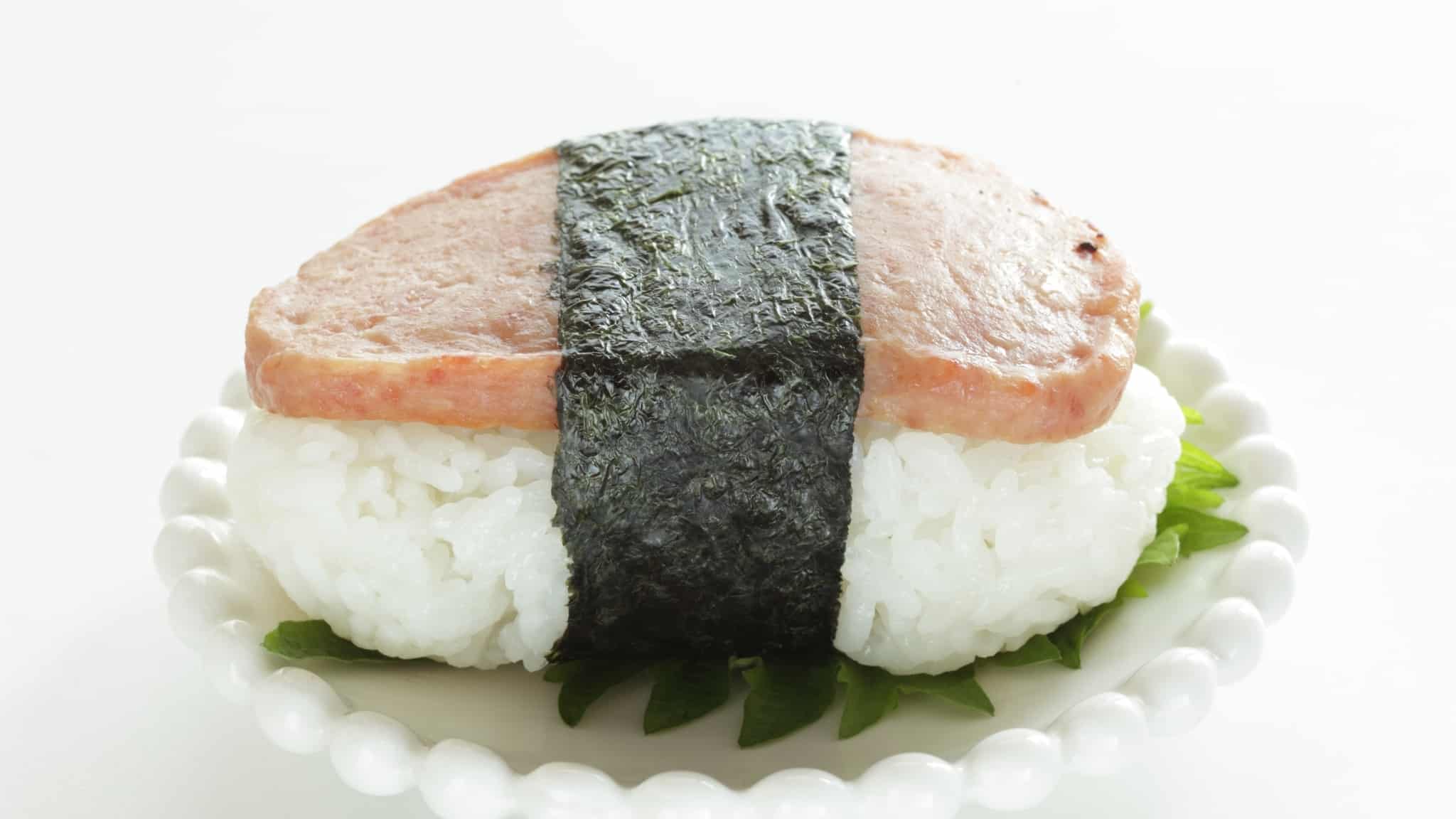
They’re made by taking freshly cooked rice and molding it with your hands into the desired shape and inserting a filling of your choice. They’re an ancient food that’s been used to feed soldiers in times of war and it’s still a common snack to this day.
This article will take a closer look at this staple dish. I’ll give you information on how to eat it, when to eat it, and how it became the popular snack it is today!
Also read: Etiquette and table manners when eating Japanese food.

Check out our new cookbook
Bitemybun's family recipes with complete meal planner and recipe guide.
Try it out for free with Kindle Unlimited:
Read for freeIn this post we'll cover:
Omusubi vs. onigiri
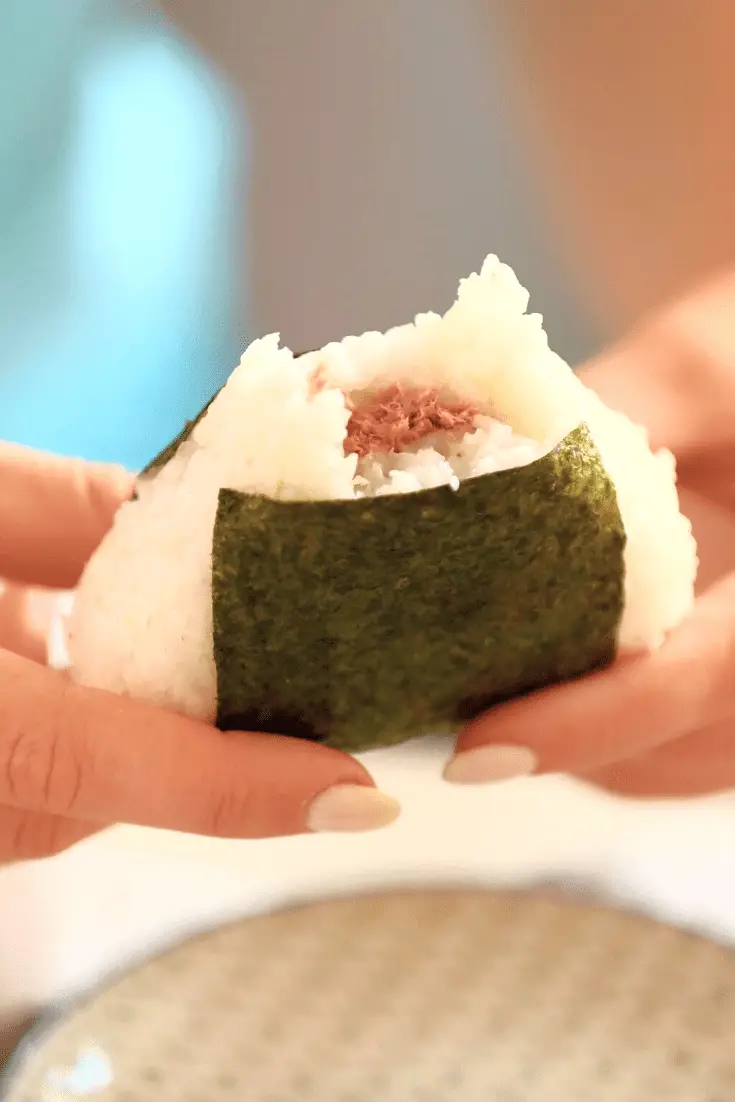
Once you start researching omusubi, you’ll see that onigiri pops up often.
Onigiri and omusubi are essentially 2 different words that both mean “rice balls”. But there are some differences.
It may be that the region or store you’re buying the rice ball in prefers using one term over the other. However, there are a few theories that take it a little bit deeper.
One theory proposes that omusubi originated with the Takamimsubi and Kamimusubi creation gods that deified mountains. It was said that they paid tribute to the mountains by molding rice balls in a triangular shape.
This gives credit to the fact that omusubi is more often used to describe rice balls that are triangular while onigiri refers to rice balls in any other shape.
Others will tell you that during the Heian period, those with high social status called their rice balls “omusubi” while lower castes would use “onigiri”.
There are others that say that onigiri comes from the phrase “oni o kiru”, which means “to cut down evil spirits”, while omusubi is derived from the phrase “en o musubu”, which means “to forge a relationship”.
We can continue to explore theories all day, but essentially, onigiri and omusubi are just different words for rice balls.
Even though onigiri and omusubi are essentially the same, omusubi tends to cost more. This may be because of its past association with higher classes.
Also read: 3 Japanese rice balls recipes | How to make onigiri and ohagi.
Origin of omusubi
No one’s exactly sure how omusubi originated, but it’s safe to say that it’s a food that goes back to the beginning of time. It’s said to have first been found in ruins that date back as far as 1 A.D.
Since then, it has been used to feed soldiers, travelers, and anyone else looking for a portable meal.
How do you eat omusubi?
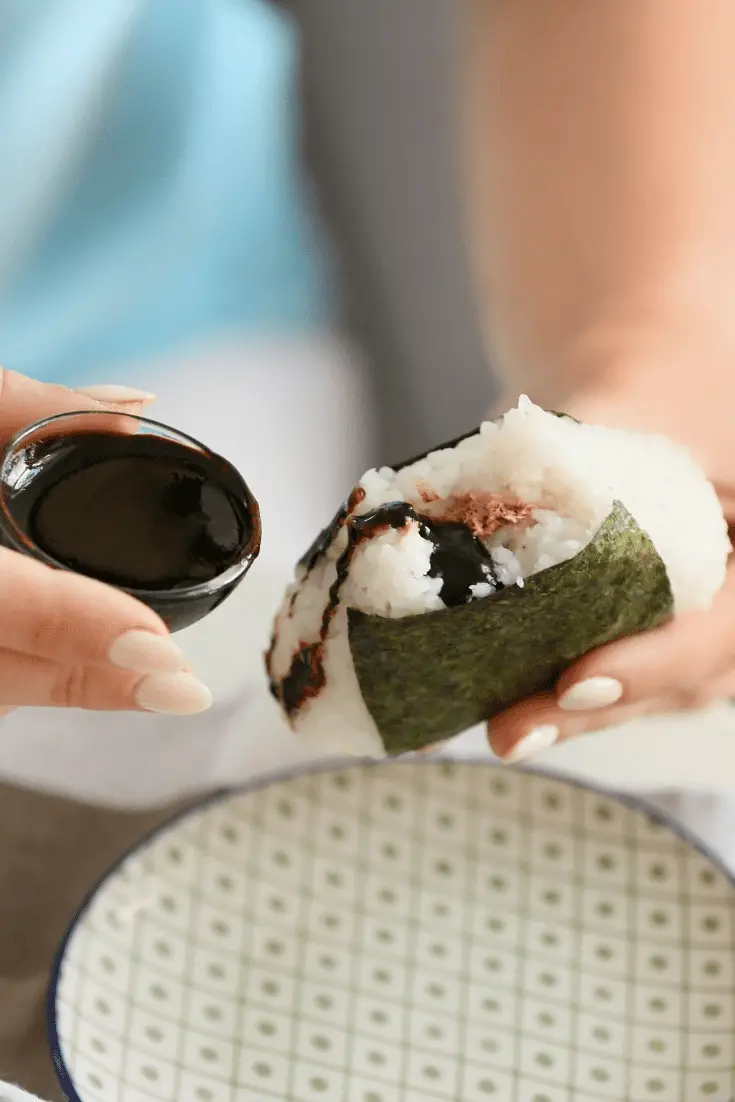
Omusubi is commonly found as a side in bento boxes. But it’s a portable food that can be eaten just about anywhere and at any time!
It’s great for trips, hikes, breakfast, and late-night snacks. It can also be eaten as a main course.
The rice is usually bound together with a strip of seaweed, so it’s easy to eat with your hands.
Omusubi can be eaten warm or cold. When you buy it from a convenience store, it’ll usually be found in the refrigerated section.
So if you’re eating it on the go, it’s likely you’ll be eating it cold. But if you have access to a microwave, you can reheat it before eating omusubi.
Where can I get omusubi?
If you go to Japan, you’ll see that omusubi is sold almost everywhere.
It’s available at supermarkets, convenience stores, train kiosks, and even vending machines.
How do you make omusubi?
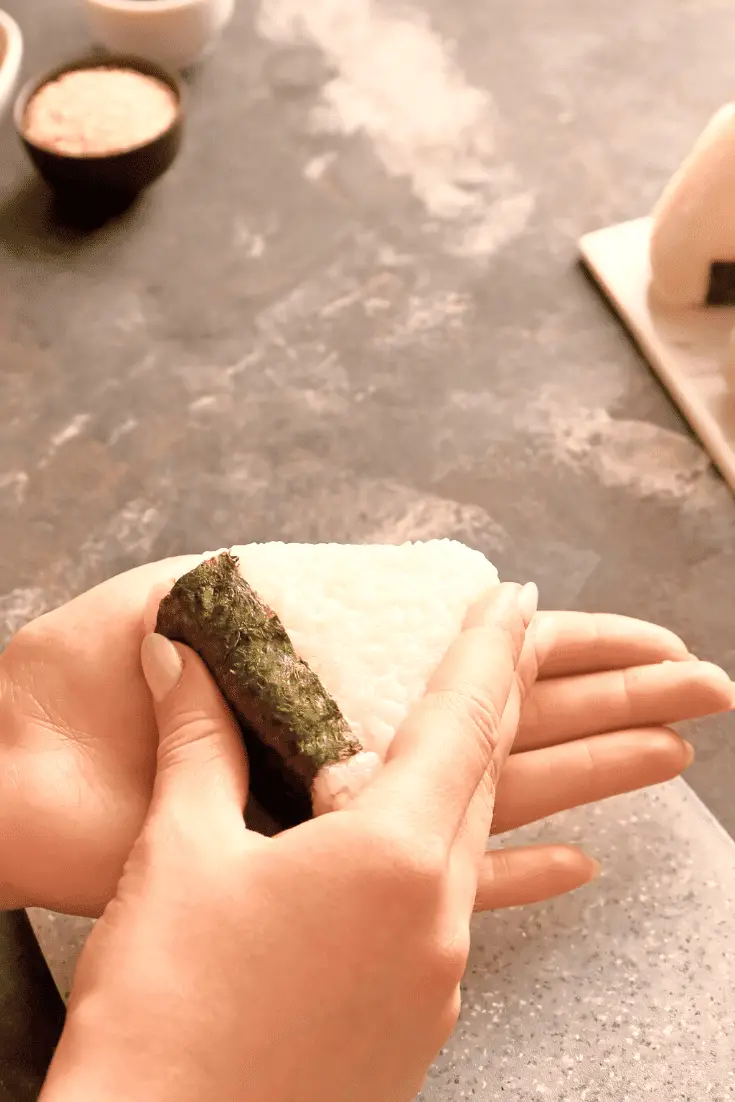
To make omusubi, start by wetting your hands and sprinkling them lightly with salt.
Then mold the rice as desired. This will give it a salty, savory taste.
You can use any type of rice to make omusubi.
While sushi, another popular Japanese dish, is usually made with white rice, omusubi can be made with various types of rice, including white, brown, long-grain, or a combination.
Wondering how to make brown rice sushi? Try this great & healthy recipe.
Although some say a rice ball must be triangular to be considered omusubi, you can mold it into any shape you want. Balls, barrels, and even star and heart shapes are just some of the configurations you can choose from.
Once the ball is shaped, fill it with the desired filling and wrap the ball in nori seaweed or another type of wrap to keep it in shape.
The nori can be wrapped completely around the rice or it can be placed on as a strip to help it maintain its form.
In recent years, a new style of rice balls has become popular. Known as onigirazu, you can use this method to wrap the rice ball and its filling in nori without having to shape it beforehand.
To see a pro making omusubi, check out this video by YouTube user Cool Hokkaido Co. Ltd.:
How long does omusubi last?
It’s best if you eat omusubi right after you make it. That’s because it’ll be nice and soft!
Over time, the rice will become hard. So if you want to store leftovers, put omusubi in an airtight container and eat within 3 days. Don’t refrigerate it, as it’ll make the rice harden quicker.
What are the different types of omusubi?
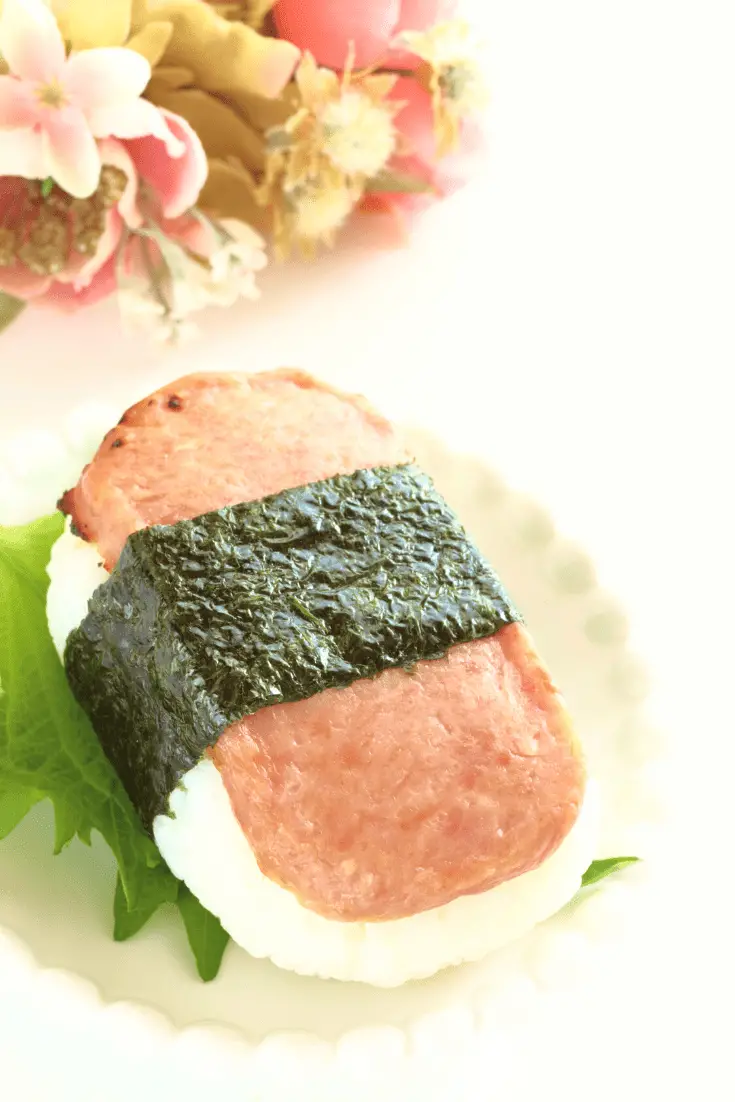
Omusubi has countless ingredient combinations that can give it a great flavor.
Although it’s typically wrapped with seaweed, it can also be made with thin strips of omelet made with a Japanese seasoning powder called furikake.
The omelets may also be dressed with sesame seeds or grated yams.
Omusubi fillings can vary as well.
Commonly used staples include pickled plums, kombo seaweed, and dried bonito flakes. Slightly out-of-the-box options include mentaiko fish roe, tarako fish roe, and tuna and shrimp with mayonnaise.
Omusubi and pop culture: What’s the connection?
Omusubi isn’t just a popular food item in Japan, but it’s also made a name for itself in the country’s pop culture industry. It played a major role in Japanese movies like Kamome Diner and Supermarket Woman.
With rice being a staple dish and comfort food in Japan, it’s no wonder that omusubi has earned its nickname as Japanese soul food.
Grab omusubi to go
Omusubi is a food that dates back to the beginning of time. Simple and filling, it’s great when eaten as a snack side or main course, and it can be filled and topped with any variety of ingredients.
How do you like to eat your omusubi?
Next, dive in the differences between Japanese and Korean food | Use of spices.
Check out our new cookbook
Bitemybun's family recipes with complete meal planner and recipe guide.
Try it out for free with Kindle Unlimited:
Read for freeJoost Nusselder, the founder of Bite My Bun is a content marketer, dad and loves trying out new food with Japanese food at the heart of his passion, and together with his team he's been creating in-depth blog articles since 2016 to help loyal readers with recipes and cooking tips.
